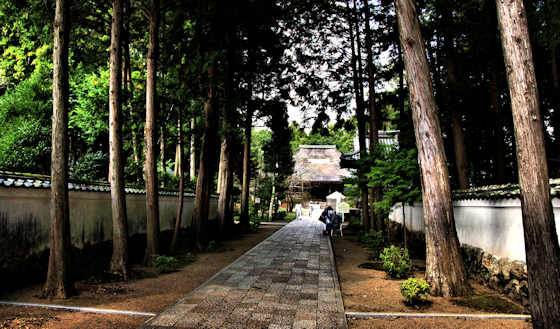Of all the Fudo statues at Kongochoin I think this pair were my favorites. I think its because of the traces of color and the fact that they were not made by professional sculptors.
Sometimes represented sitting, often found standing, occasionally he strikes and active and aggressive pose.
The man made waterfall for the practise of cold water austerities. Fudo Myo is almost always found at such locations.
Kongochoin was a little higher up Mount Wakasugi than Myo oin, and part of the Kyushu 108 temple pilgrimage as awell as the Sasaguri 88 temple pilgrimage.
Further up the mountain I was to visit a couple more temples. both of which had a Fudo presence.

















